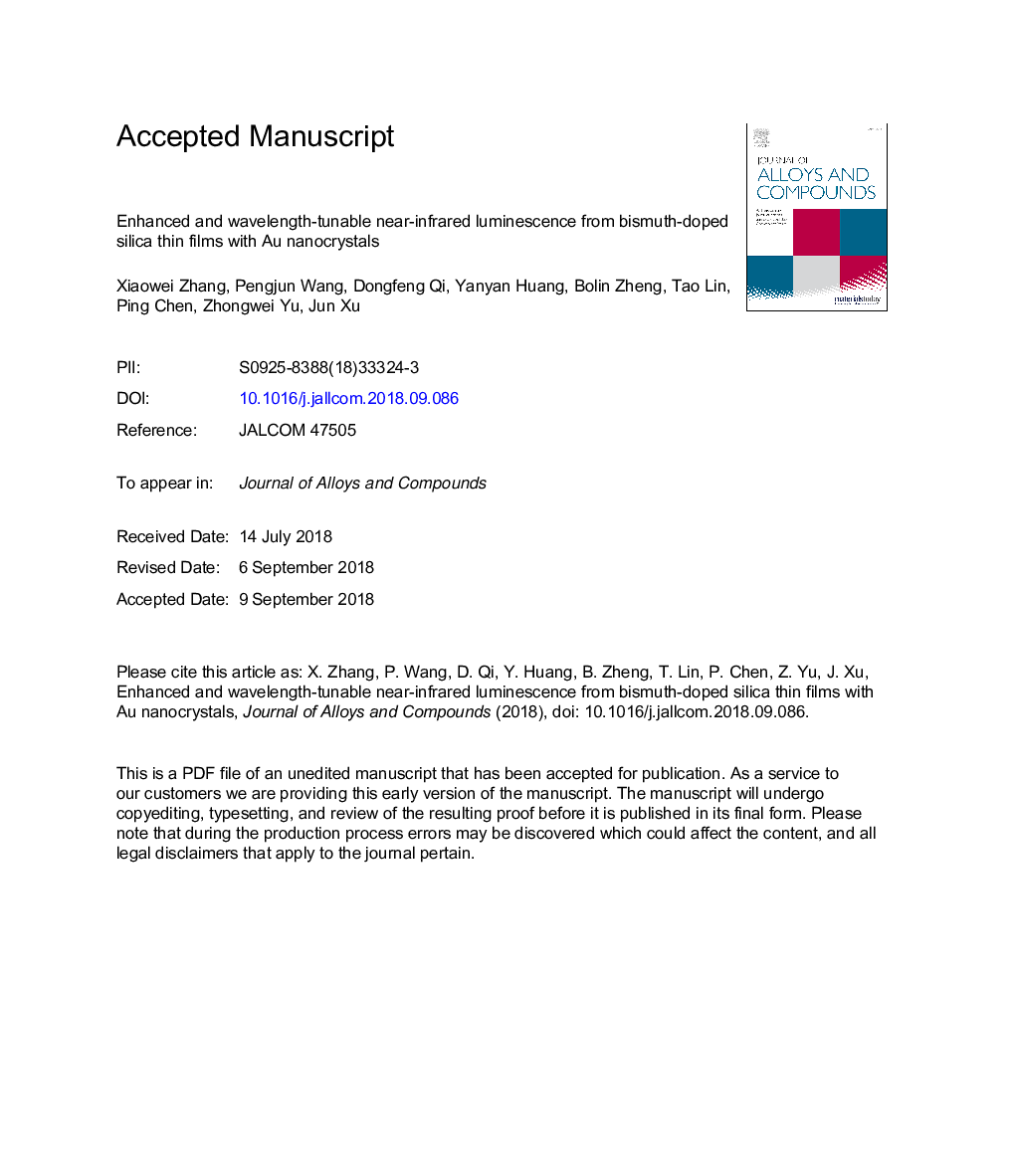| Article ID | Journal | Published Year | Pages | File Type |
|---|---|---|---|---|
| 10155969 | Journal of Alloys and Compounds | 2019 | 16 Pages |
Abstract
Near-infrared (NIR) luminescence origin of Bi-doped amorphous silica thin film is elucidated by the XPS characterizations and selective photoluminescence (PL) measurements. The excitation wavelength-dependent NIR luminescence suggests the co-existence of two different types of Bi-related active centers, Bi0 and Bi+, should contribute to the NIR PL emissions at 1150â¯nm and 1280â¯nm, respectively. A confined crystallization growth strategy is designed for fabricating the uniform-size Au nanocrystals (NCs) embedded in Bi-doped amorphous silica thin film. Via controls of the doping amounts of Au ions, the NIR PL emission of Bi ions in amorphous silica thin film can be wavelength-tunable and enhanced by nearly 300% on the optimum Au ions doping amount. Temperature-dependent PL emission spectra demonstrate parts of Au ions play a role of eliminating hydroxyl groups and give rise to greatly enhanced NIR PL emission intensity. We anticipate that both the greatly enhanced and wavelength-tunable PL emission and the discussion of NIR luminescence origin will shed light on future research of Bi-doped luminescent materials.
Related Topics
Physical Sciences and Engineering
Materials Science
Metals and Alloys
Authors
Xiaowei Zhang, Pengjun Wang, Dongfeng Qi, Yanyan Huang, Bolin Zheng, Tao Lin, Ping Chen, Zhongwei Yu, Jun Xu,
